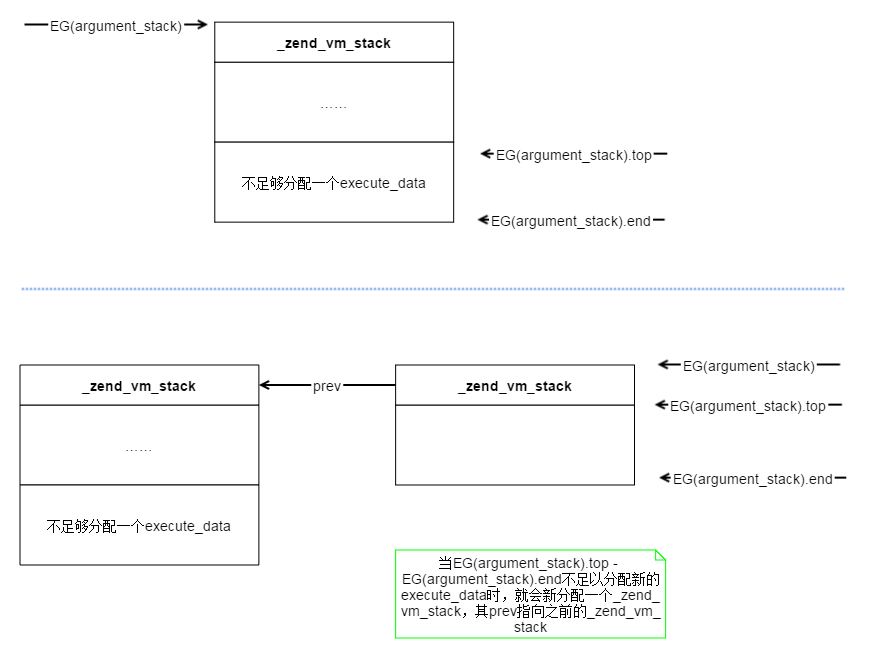PHP execute_data
这阵子想研究下PHP Generator的实现,发现对于Generator很重要的一个数据结构为_zend_execute_data,在PHP源码中通常是一个execute_data变量,与该变量相关的宏是#define EX(element) execute_data.element。
查看了下opcode的执行,发现_zend_execute_data对于PHP代码的执行也是关键的数据结构。所以本文主要围绕该数据结构展开来讲~
PHP代码的执行
总所周知,PHP代码的执行会经历:词法分析->语法分析->opcode生成->执行opcode。
对“opcode生成->执行opcode”展开来就是:
zend_compile_file()将PHP代码文件编译为op_array(opcode的数组)- 初始化一个execute_data,之后赋值:
EX(op_array) = op_array;EX(opline) = op_array->opcodes; - 执行opcode:
EX(opline)->handler(execute_data),这是在一个while语句中执行的。
execute_data可以理解为一个执行上下文,通过gdb单步调试,发现:
当我们执行php hello.php时,会创建一个execute_data,当出现include/require或函数调用时,则会新建一个execute_data后,切换到新的execute_data执行,当一个execute_data执行结束,会切换到上层的execute_data继续执行。
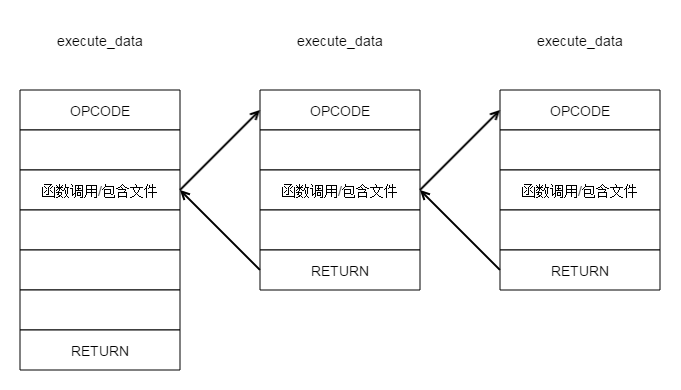
每一个op_array的最后一条opcode都是RETURN,这也是为什么在类似PHP框架的配置文件中可以直接<?php return [配置信息]; ?>,而加载配置文件的代码为$config = require('配置文件');。
通过VLD扩展可以打印出一个PHP执行文件产生的opcode:
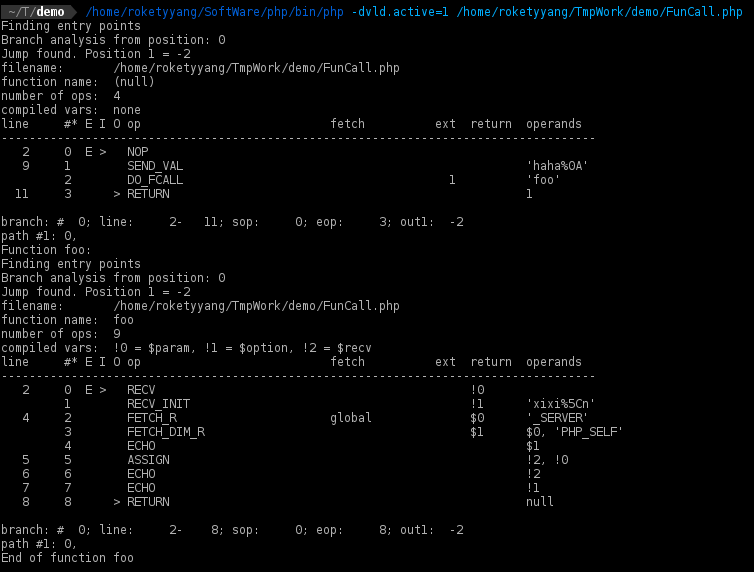
如上图,就存在两个op_array,一个是FunCall.php文件的,一个是foo函数的。
_zend_execute_data结构体说明
未标注释的结构体成员尚未了解其作用
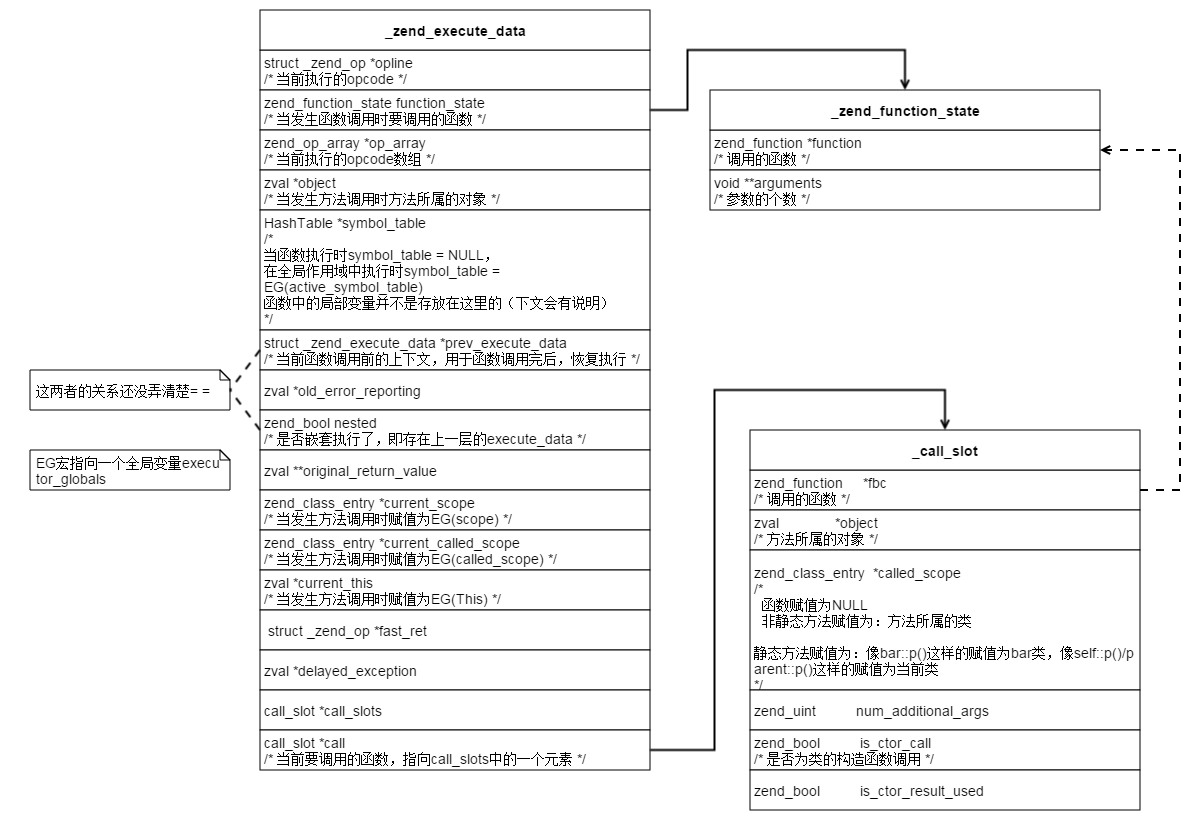
以一个例子说明下EX(object)、EX(current_scope)、EX(current_called_scope)、EX(current_this)、EX(call)、EG(This)、EG(scope)、EG(called_scope)在函数调用时的变化:
例子代码:
1
2
3
4
5
6
7
8
9
10
11
12
13
14
15
16
17
18
19
20
21
22
23
24
25
26
27
28
<?php
class bar
{
static public function pp($param)
{
echo $param;
}
}
class foo
{
public function p($param)
{
self::spp($param);
bar::pp($param);
}
static private function spp($param)
{
echo $param;
}
}
function ff()
{
$foo = new foo();
$foo->p("haha\n");
}
ff();
调用图(图太大,请另起一个标签页查看= =):
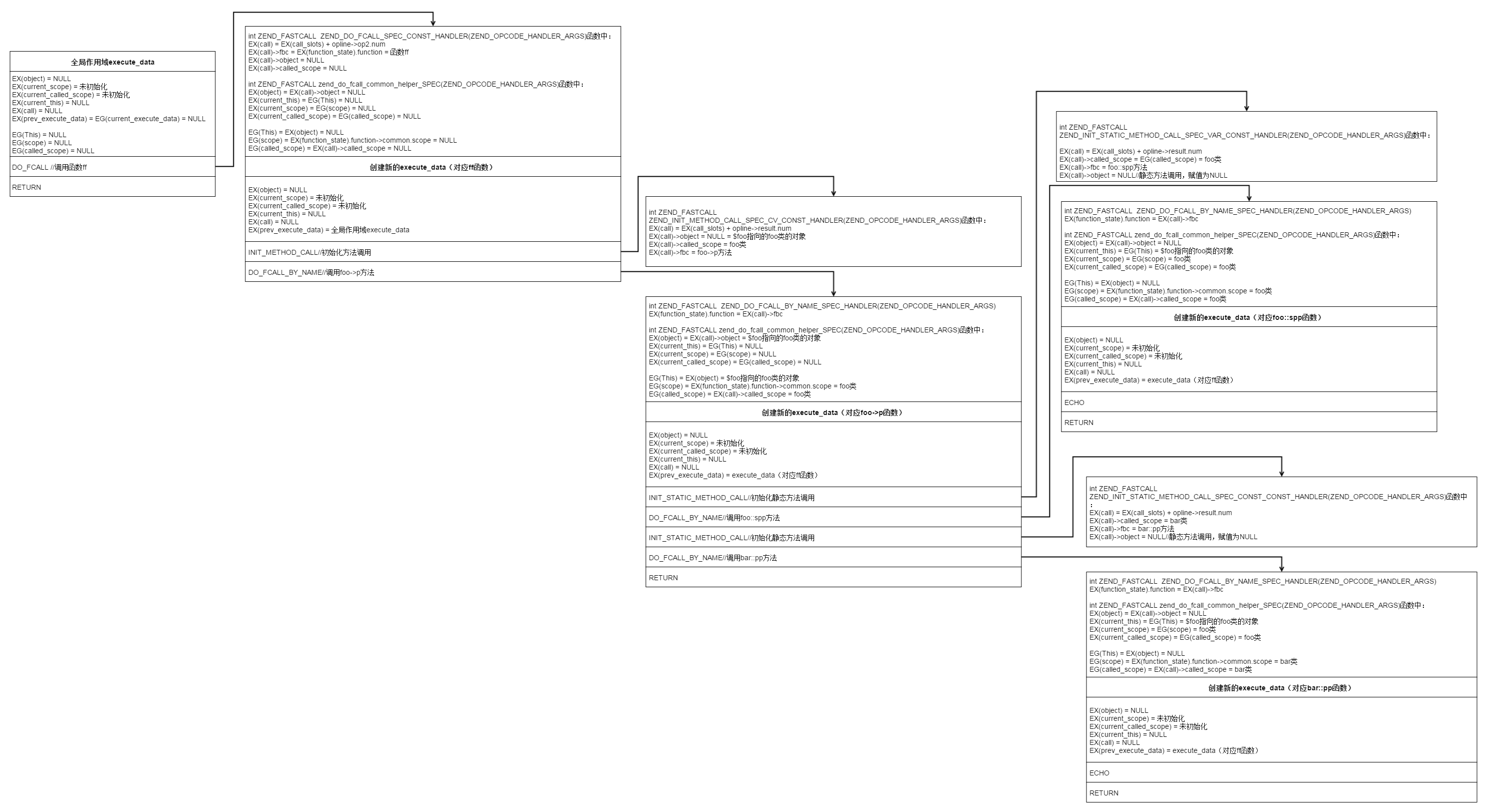
_zend_execute_data结构体的初始化
在Zend/zend_execute.c中的函数zend_execute_data *i_create_execute_data_from_op_array(zend_op_array *op_array, zend_bool nested TSRMLS_DC)负责创建新的execute_data,其内存分配是在EG(argument_stack)(指向某一段内存,_zend_vm_stack数据结构,不足时会增长)上进行的。
1
2
3
4
5
6
typedef struct _zend_vm_stack *zend_vm_stack;
struct _zend_vm_stack {
void **top;
void **end;
zend_vm_stack prev;
};
在一个初始化好的EG(argument_stack)上分配一个execute_data:
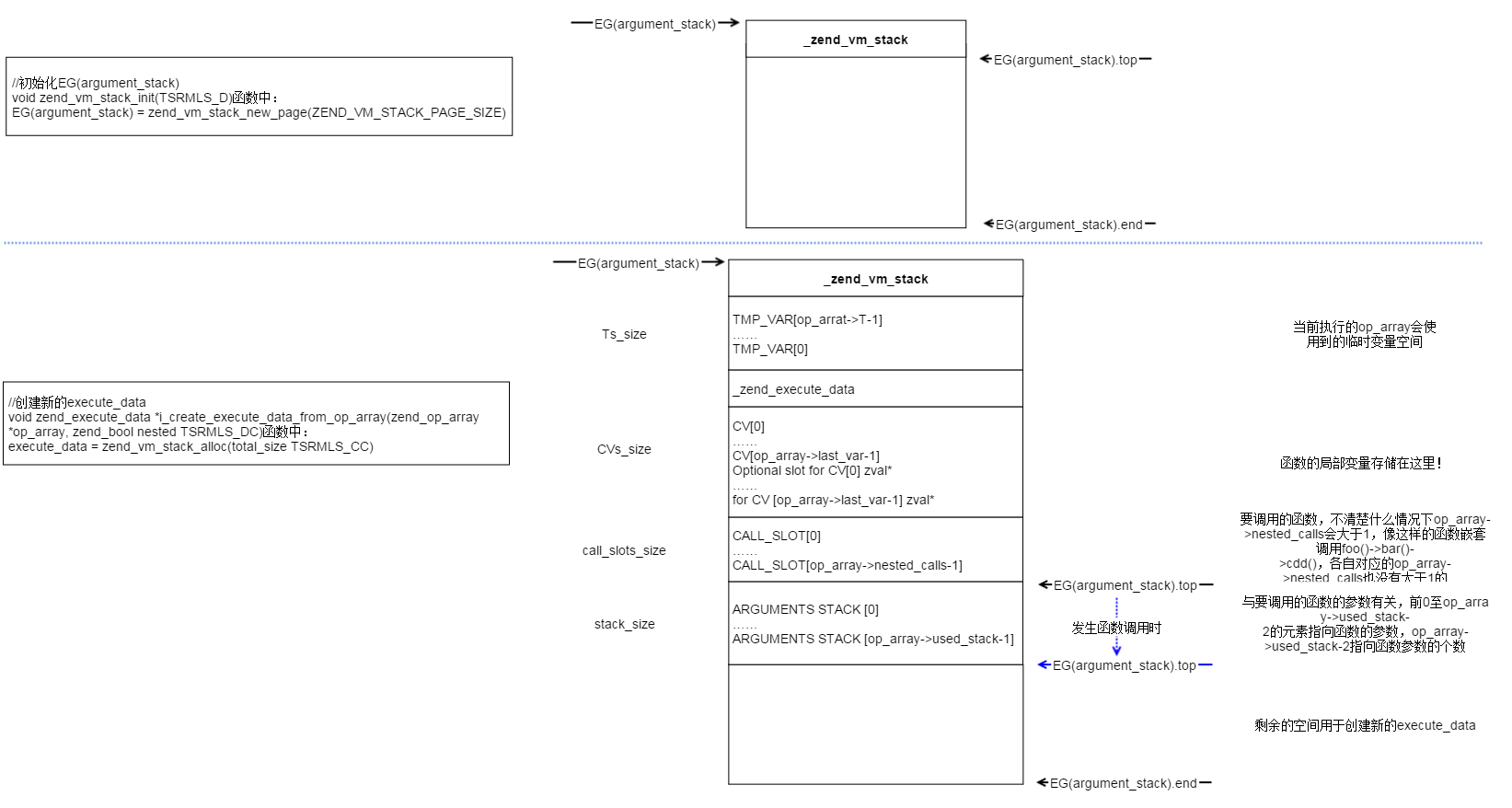
EG(argument_stack)上没有足够的内存分配一个execute_data时,新申请一个_zend_vm_stack:
